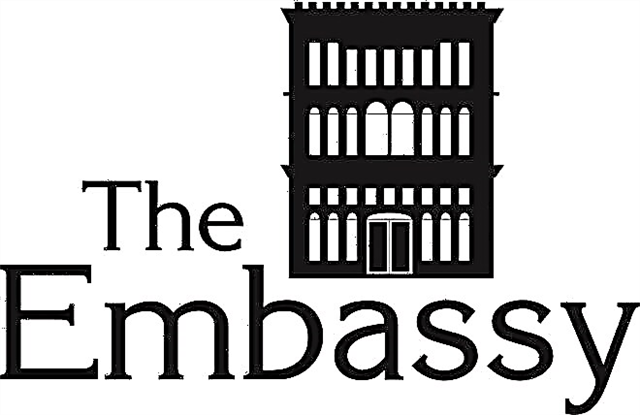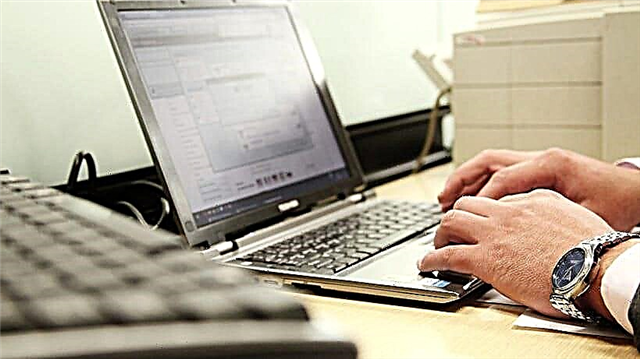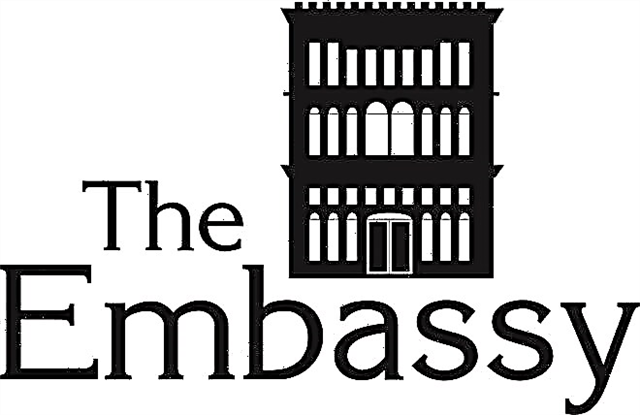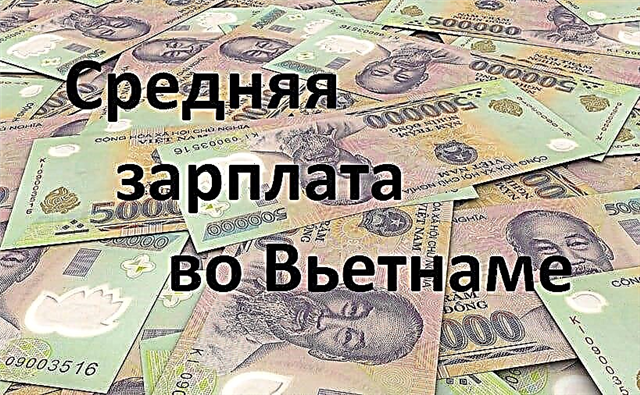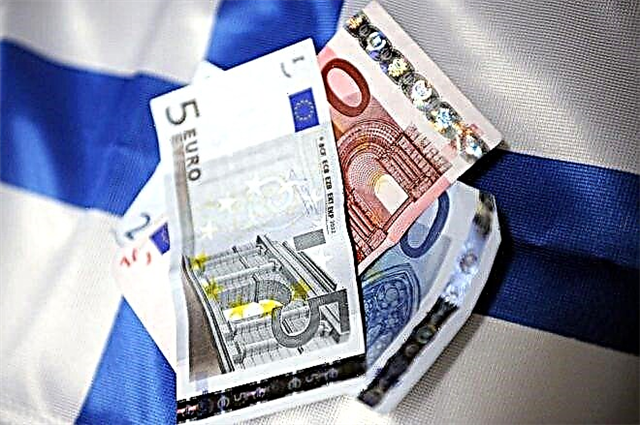Before you go to Finland, you should definitely find out what currency is used in this country, as well as inquire about the rules of operation of ATMs and the specifics of conducting cashless transactions. This will help you avoid embarrassing situations and pay for goods or services without any problems. In addition, you need to know where else in Europe the Finnish currency can be used.

Finnish money history
Throughout the formation of the Finnish state financial system, several different currencies were used. Their choice was often determined by those who conquered and ruled Finnish territories.
So, the Swedish riksdaler (it was they, and not the Swedish kronor, which were introduced into circulation only in 1873) were in use in Finland in the Middle Ages, when the country was part of Sweden. During the Russian-Swedish wars of the 18th century, Swedish riksdalers and Russian rubles were in circulation on the territory of the state at the same time. And after Finland joined Russia in 1809, Russian rubles became the main currency.
In 1860, the Finnish mark was introduced by Emperor Alexander II as an independent currency of the Grand Duchy of Finland. The name of the new currency was invented by Elias Lennrot, the collector of the Kalevala. Interestingly, the German mark appeared only 10 years after the introduction of the Finnish one.
In 1946, the design and protection of the currency in Finland changed, and in 1963 it was denominated. At the same time, 100 old Finnish marks were exchanged for one new one.
Since March 1, 2002, the euro has become the only legal tender in Finland. Banknotes are presented in standard denominations: 5, 10, 20, 50, 100, 200, 500 €. Coins: 1, 2, 5, 10, 20 and 50 euro cents, 1 and 2 €.
Finland's euro changeover process
The Republic of Finland joined the European Union on January 1, 1995, and the decision to switch to a common European currency was made on January 1, 1999.
The rejection of its own national currency brought a lot of positive things for the state:
- reduction of risks associated with exchange rates of various currencies;
- simplification of settlements with European partners;
- increasing the field for investment;
- elimination of costs associated with conversion operations;
- reducing the difference in prices for the same goods within the country and abroad.
The process of exchanging Finnish marks for euros began on January 1, 2002. At that time, the national currency of Finland was changing at the rate of 1 EUR to 5.94573 FIM.
Since March 1, 2002, the euro has become the only official currency in Finland.
And although euro banknotes and coins were put into circulation on January 1, 2002, settlement in Finnish marks in the country was possible for another two months. At the same time, everyone could exchange their remaining Finnish marks for euros for free until 2021.
What currency to take with you when going to Finland
There are no restrictions or prohibitions on the import of any foreign currency into Finland. However, it is prohibited to carry over 10,000 € without a declaration.
The best solution would be to exchange Russian rubles, US dollars or other currencies for euros in advance. This will help:
- reduce the time spent looking for a profitable exchange office and the exchange itself;
- plan your expenses in euros in advance;
- avoid additional costs associated with cash withdrawals;
- prevent financial losses associated with unfavorable course changes.
In the border areas in the southeast of Finland, there are retail outlets that accept Russian rubles. In the Finnish capital, this is done by the Stockmann shopping center and the Prisma hypermarket in Lappeenranta. However, conversion at the exchange rate is not very profitable - the difference is up to 10 rubles for 1 euro.
Take a sociological survey!
Where is it more profitable to exchange currency in Finland
If you did not manage to exchange the available currency for euros in advance, you will have the opportunity to do it in Finland. In the event that the euro is needed urgently, you should pay attention to the border exchange offices:
- Svetogorsk - Sberbank branch can be found on the way to the customs checkpoint. There is also a branch of VTB Bank in the city.
- Torfyanovka - there is a Vaalimaa exchange office.
- Lingonberry - Nujamaa currency exchange office is located here.
- Imatra - immediately after crossing the border, you can change money at a special exchange kiosk. In addition, there are several bank branches that you can contact from Monday to Friday from 09.15 to 16.15.
- Lappeenranta. You can change money at the Safar exchanger in the city center. Working hours: weekdays - 09.30-17.00, Saturday - 09.30-14.00, Sunday - 12.00-14.00.
- Kotka - exchange can be made at one of the many bank branches. One of them is conveniently located next to the Pasaati shopping center in the city center.
In Helsinki, there is a Forex exchange office at the railway station: on weekdays - 08.00-20.00, Saturday - 09.00-19.00, Sunday - 09.30-17.00.
Exchange offices Nordea (06.00-21.00) and Travelex (05.30-20.30) are available at the capital's airport.
You can find Forex exchange offices in the capital at the following addresses:
- Mikonkatu 11, near the Ateneum Museum (weekdays - 09.00-19.00, Saturday - 10.30-16.00);
- TC "Itis", in the Pasaasi section (weekdays - 09.00-20.00, Saturday - 09.30-17.00). This exchanger can change its location. Information can be clarified in other offices;
- Aleksanterinkatu 52, not far from the Stockmann shopping center (weekdays - 09.00-21.00, Saturday - 09.00-18.00, Sunday - 12.00-18.00)
- Stockmann Itis, Itäkatu 1b, 1st floor (weekdays - 09.00-21.00, Saturday - 09.00-18.00, Sunday - 12.00-18.00).
Forex offices are easily recognizable by their striking contrasting designs in yellow and black. Here the rate is the most profitable in comparison with all other exchangers and most banks. As a last resort, you can always exchange currency at the reception of one of the large hotels or in exchange offices on the territory of large shopping centers.
Another popular network of exchange offices in the capital is Tavex Oy. Its offices are located at the following addresses:
- Fabianinkatu 12, in the immediate vicinity of the Esplanadi Park (on weekdays - 09.00-18.00, Saturday - 10.00-16.00);
- railway station (on weekdays - 10.00-18.00).
You can carry out exchange operations in banks throughout the country. The working hours of the branches are from 09.15 to 16.15 on weekdays. However, in order to carry out the operation, you will need to present documents proving your identity. It should be borne in mind that bank branches are closed on weekends and holidays.
The material on the Finnish banking system is presented in the article "Peculiarities of the Banks in Finland".
Features of ATMs and cashless payments in Finland
Cashless payments are available to all tourists in Finland. Almost all establishments accept plastic cards. They are as popular as the classic paper banknotes and coins.
Payment for services and goods with electronic money / payment systems in Finland is not widespread. The most acceptable option is the international payment system PayPal.
In addition, the Uniqul payment system began its work in test mode, which uses not the card, but the user's face to identify the payer. The system stores data on the bank cards of the participants and makes withdrawals from them to pay for goods and services.
Most restaurants, cafes and shops offer contactless payments via Apple Pay and Android Pay.
All over Finland plastic cards of international payment systems are accepted for payment: Visa, MasterCard, Diners Club and American Express. Experts recommend taking MasterCard with you for use during the trip. Its base currency is Euro.Thus, paying with a card of this particular payment system will help to avoid overpayment for conversion.

When paying with a card, you should check how much the commission was charged. In particular, the commission for conversion is often withdrawn the next day after the transaction. Moreover, as a result of a change in the exchange rate, it may not be the amount you expected. This is due to the delay in clearing (non-cash settlement process) between banks.
Many Russians are interested in whether it is possible to pay with a Sberbank card in Finland. Yes, if it is a card belonging to one of the international payment systems.
And some more useful tips for those who decide to go abroad and pay there with a plastic bank card:
- notify your bank of your trip to avoid a sudden card blocking;
- make sure that your card is not subject to restrictions on use in other countries;
- it is more profitable to open a foreign currency account and link a card to it than to use a credit card in foreign or local currency;
- distribute funds to several cards so that if you lose one you will not be left without funds abroad;
- insure your savings in the event of a compromise of the means of payment, which can lead to the loss of finances.
Withdrawing funds from ATMs is another way to get cash in the currency you need while in the country. It is convenient to use the terminals, since the machines located on the streets work daily and around the clock. Customer service is provided in Finnish, Swedish and English.

Withdrawing money from ATMs is always a paid operation. Using debit and credit cards, you will spend an additional 2-3% of the transaction amount.
Do not forget that your bank will also take a commission for using a third-party bank ATM. The total amount of overpayment for cash withdrawals from Finnish ATMs is announced before confirmation of the transaction. If it does not suit you, the transaction can be canceled.
As far as specific terminals are concerned, the Otto ATM network is the most popular in Helsinki.
Use of traveller's checks
The main advantage of traveller's checks is the protection of your funds in case of loss of the document itself. Large Russian banks are engaged in the design of this type of paper. Each check is exactly a document. The most common are traveler's checks from such payment systems as Visa, American Express, Thomas Cook, City Corp, Bank of America and MasterCard.
When crossing the border with Finland, traveller's checks must be indicated in the declaration. If the papers are lost, it is enough to contact the bank that serves this type of payment documents, name the numbers of the lost traveller's checks, answer a few questions regarding their registration and get cash in your hands.
Finally
Since 2002, the official currency of Finland is the euro. The former local currency, the Finnish mark, fell out of use on March 1, 2002.
There are many banks, exchange offices, ATMs operating in the country. The most common non-cash payment by bank plastic cards. Electronic and contactless payment systems are less commonly used.
When going on a trip to Finland, you can make exchange operations at the border, make an exchange in Imatra and other Finnish border cities, as well as directly in Helsinki.
It should be borne in mind that the least favorable rate is offered in hotels, terminals on central streets and expensive shops.
When withdrawing cash from ATMs, you should be prepared to pay a considerable commission from both a third-party and your own bank. Of all plastic cards, MasterCard should be preferred, since its main currency is the euro. In addition, when traveling abroad, you should inform your bank about the upcoming trip and find out if your card will be valid in Finland.
All travelers checks and cash over € 10,000 must be declared.




